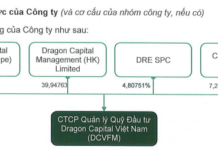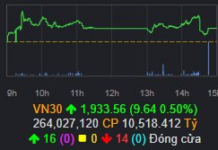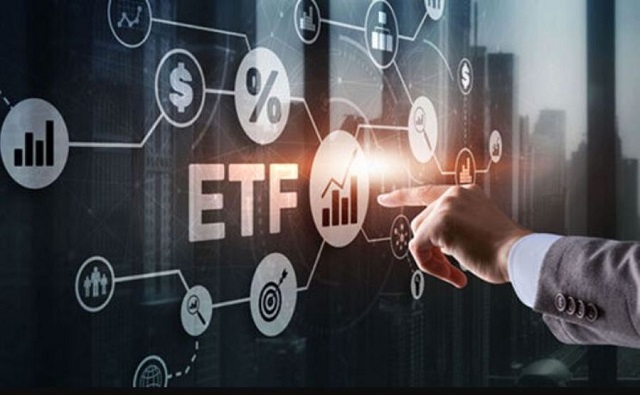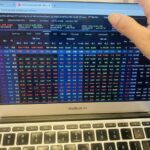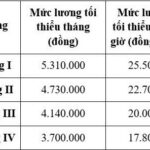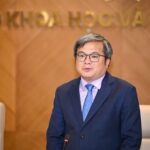The appeal of Asian ETFs is undeniable, with a record-breaking $118 billion in capital inflows this year, driven by their transparency and ease of trading. This has not gone unnoticed by individual and institutional investors alike.

Asian investors are flocking to ETFs, showing a keen interest in the stock market. Image: finews.asia
|
Attracting Both Individual and Institutional Investors
Fredric Luk, a 25-year-old consultant in Hong Kong, began his stock market journey this year with high hopes. He carefully selected individual stocks with promising potential. However, after incurring losses from some of his bets, he quickly sold off his holdings in US tech companies and redirected his capital towards ETFs.
“Investing in individual stocks can be quite risky, especially if you don’t have a deep understanding of the market. For me, gaining exposure to a broader market (through ETFs) is more effective,” shared Luk.
Luk is part of a growing trend of Asian investors turning to ETFs. These low-cost, diversified, and transparent investment vehicles are increasingly becoming the preferred choice for both retail and institutional investors.
According to ETFGI, a research and consulting firm, the total assets of ETFs in the Asia-Pacific region, excluding Japan, grew by nearly 15% ($118 billion) in the first five months of the year, reaching a record high of $890 billion. In 2023, these ETFs also witnessed impressive asset growth of 36%.
The $118 billion inflow during this period is the highest ever for Asian ETFs. As of May, these funds have experienced 35 consecutive months of net inflows, another record-breaking streak.
A recent report by PwC reveals that including Japan, the Asian ETF market now exceeds $1.3 trillion and is projected to reach at least $2.5 trillion by 2028.
With this scale, Asia could become the second-largest ETF market globally, second only to the US. The strongest demand for ETFs in the region is expected to come from individual investors, the report added.
“In a market where younger investors are more self-researched and informed about what they buy, ETFs are gaining popularity,” commented Eugenie Shen, head of asset management at the Asian Securities Industry and Financial Markets Association (ASIFMA)
 In 2023, nearly $800 billion flowed out of mutual funds globally, while ETFs attracted a net inflow of $800 billion. Image: SCMP |
Competing for Market Share
ETFs, first introduced in the US in 1993, track various baskets of stocks, typically mirroring benchmark indices, with the goal of generating returns that correspond to the overall market. Similar to other securities, investors can buy and sell ETF units through brokers during market trading hours.
These products offer several advantages to investors.
Compared to individual stocks or bonds, ETFs provide access to a broader market through a single instrument. Unlike mutual funds, which often require intermediaries such as banks to access, ETFs do not involve intermediaries, reducing costs for investors.
According to Antoine de Saint Vaulry, head of ETF sales and business development for Asia at Citi in Hong Kong, institutional investors have long considered ETFs as a core component of their investment portfolios.
He further noted that Asia-Pacific ETF markets such as China, Taiwan, India, South Korea, Japan, and Australia have witnessed a surge in participation from individual investors in recent years.
As ETFs rise in popularity, becoming the investment product of choice in Asia, global and regional ETF providers are competing fiercely for market share.
Their offerings are diverse, ranging from passively managed ETFs that track stock indices to actively managed funds that invest in a themed group of stocks.
Shen of ASIFMA pointed out that institutional investors are drawn to ETF units because of their lower transaction costs. Meanwhile, individual investors, armed with their own research, can easily find ETFs that align with their investment preferences.
BlackRock, Vanguard, and State Street, the world’s top three index-tracking ETF providers, collectively control 66% of the global ETF market, valued at $12 trillion. Their ETFs have also attracted some of the largest capital inflows in the Asian region.
Andy Ng, head of iShares Strategic Product Solutions for Equities at BlackRock, noted that Asian investors are not only investing in ETFs focused on local stocks but are also seeking global equity exposure.
Thematic Investing
Andy Ng emphasized that Asian investors are not just interested in ETFs that concentrate on local stocks; they also want exposure to global equities.
In November last year, CSOP Asset Management, a Hong Kong-based asset management firm, launched the CSOP Saudi Arabia ETF. This was the first ETF in Asia to track the stocks of the largest companies in the Gulf country.
Ding Chen, CEO of CSOP, highlighted the intense competition but stressed the importance of focusing on localized and regional thematic opportunities.
For instance, the meteoric rise of Nvidia (US), a leading AI chip provider, boosted the stocks of Asian chipmakers such as Taiwan’s TSMC and South Korea’s Samsung. CSOP’s ETFs, which track these stocks, have seen significant capital inflows.
Mirae Asset Global Investments, a South Korean firm managing $250 billion in assets, shared that their ETF research team takes a broad view of the economy and the market to identify long-term structural growth themes.
According to Youngrae Cho, CEO of Mirae Asset Global Investment in Hong Kong, an ideal thematic ETF would be non-cyclical, possess long-term structural growth potential, and have the potential to become a significant trend.
ETFs themed around K-pop companies, lithium-ion battery manufacturers, and real estate investment trusts in Japan are among Mirae’s offerings.
ETFs are rapidly overtaking mutual funds. In 2023, nearly $800 billion flowed out of mutual funds globally, while ETFs attracted a net inflow of $800 billion.
Philippe El-Asmar, head of ETFs for Asia-Pacific at JPMorgan Asset Management, commented that ETFs offer greater transparency, liquidity, and cost savings compared to mutual funds.
Morningstar data showed that the average expense ratio (the percentage of assets that investors pay in management fees) was 0.48% for passively managed ETFs and 1.02% for actively managed mutual funds in 2023.
By Chanh Tai (SCMP)
Dragon Capital Chairman: “Long-term vision is needed, accepting necessary adjustments for a safer, more efficient, and higher quality market”
According to Mr. Dominic Scriven, Chairman of Dragon Capital, the role of the finance industry in the stock market will be significant in 2023 and possibly in 2024. The roles of other industries, such as real estate or consumer goods, will depend on their respective challenges.


















